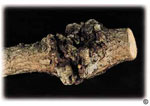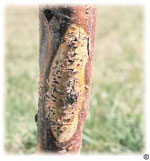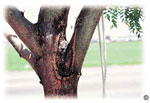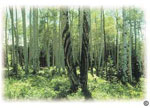
Aspen, cottonwood, mountain ash, willow and elm trees with environmental or weather-related stress are often more susceptible to canker diseases. These diseases also strike thin-barked trees that are susceptible to sun burns.

A canker is an inverted blister on the bark of the tree which, during some time of the year, may ooze sap. A canker forms on branches or trunks of trees. Fungi, very small organisms that produce spores and mold-like material, cause most canker diseases. Leaves of a tree affected by these fungi begin to turn yellow and may drop to the ground. Some limbs may not develop new leaves in the spring. In severe cases, trees may die if canker disease isn’t treated for a few years.

Canker diseases can be controlled if diagnosed early. When leaves turn yellow prematurely, check the limbs and branches for damage or bark discoloration. These areas may be shrunken or shriveled. Check inside these areas for little bumps or pimples breaking through the bark tissue. They’re evidence that a fungus is causing the canker.

To control canker disease on trees, cut off the affected branch or limb. If a large canker is on the main trunk, the tree may need to be replaced. No effective chemicals are available to control the fungi that cause canker disease. Good management practices, including fertilizer, proper drainage, watering and appropriate tree selection, are important for healthy trees and are the best defense against fungi.

For more information, see the following Colorado State University Extension fact sheet(s).



